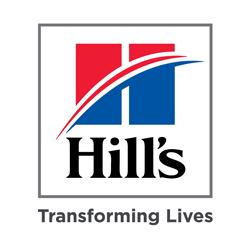Table 6.1
Table 6.1 provides a list of some skill-set examples that fall into three categories (or levels) of veterinary technician utilization. Although not inclusive of all skill sets and experience levels, it provides at least a foundation for assessing the CrVTs within each practice and determining how well their skill sets are utilized.
|
LEVEL 1
|
LEVEL 2
|
LEVEL 3
|
- Obtain/monitor vitals on nonanesthetized patient
- Cytology
- Bandaging (basic)
- Dental prophylaxis
- Dental radiographs
- Radiographs (basic)
- Administer vaccines
- Anal gland expression
- Nail trims
- Client education (basic topics— pain assessment, husbandry)
- Phlebotomy
- Urinary catheter care
- Intravenous catheter care
- Medication administration
- Husbandry
- Anesthesia monitoring (ASA I–II)
- Fill prescriptions
- Collect urine/fecal samples
- Cystocentesis
- Gastric intubation
- Tracheal intubation
- Blood typing
- Monitoring blood product transfusion
- Medication/fluid therapy calculations (basic drug calculation, constant rate infusions, percent calculations, mEq)
- Aseptic technique
- Basic suturing skills
- Perform Basic Life Support in CPR
- Controlled substance handling and monitoring
- Set up for surgery/procedures
- Low-stress handling/restraint
- Perform ophthalmological testing (Schirmer tear test, fluorescein, tonometry)
- Suture/staple removal
- Microchip insertion
|
- Apply splints or casts
- Anesthesia monitoring (ASA III–IV)
- Advanced imaging anesthesia support (CT, MRI, PET)
- Client education (nutrition, diabetes, rehabilitation skills, palliative care)
- Esophagostomy tube maintenance
- Blood transfusion and crossmatching
- Dental local blocks
- Surgical assisting
- Perform Advanced Life Support in CPR
- Critical care assessments
- Urinary catheter placement
- Physical rehabilitation treatments (laser, shockwave, ultrasound, TENS, etc.)
- Regenerative medicine preparations (PRP, stem cell processing, hyaluronic acid injections)
- Emergency triage
- Surgical discharge
- Multimodal analgesia and interventional prescriptions (vasopressors, gastrointestinal, etc.)
- Intraosseous catheter placement
- Perform/position for orthopedic radiographs (VD shoulder, OFA pelvis, spinal series)
- Perform fine needle aspirates
|
- Advanced imaging (CT, MRI, PET)
- Central line placement
- Arterial blood pressure monitoring
- Chest/tracheal tube management
- Physical rehabilitation assessments
- Epidural injections
- Ultrasound-guided nerve blocks
- Chest tube placement
- Blocked cat urinary catheter placement
- Tracheostomy tube care
- Difficult intubation
- Epidural catheter care
- Lead CPR code (RECOVER)
- Neonatal care
- Administration of total intravenous anesthesia
- Nasogastric tube placement
|
ASA, American Society of Anesthesiologists; CPR, cardiopulmonary resuscitation; CT, computed tomography; OFA, Orthopedic Foundation for Animals; PET, positron emission tomography; PRP, platelet-rich plasma; TENS, transcutaneous electrical nerve stimulation; VD, ventrodorsal






